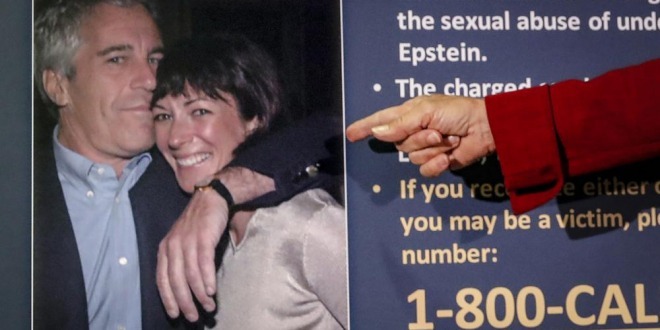The sex-trafficking trial of Jeffrey Epstein’s former girlfriend, Ghislaine Maxwell, concluded in a guilty verdict, but the flow of misleading information surrounding the case hasn’t ceased.
On Thursday, unsubstantiated claims surfaced that trial materials were sealed to protect Epstein, who committed suicide in 2019 while awaiting a sex crimes trial, and his powerful associates. Simultaneously, previously disproved accusations resurfaced on social media, including claims that the high-profile trial received no media coverage.
Maxwell was found guilty on five of the six counts after a month-long trial in which she was accused of assisting Epstein in the sexual exploitation of adolescent females.
Here are some of the statements that have been making the rounds on the internet, along with the facts you need to know:
CLAIM: After the jury convicted Maxwell guilty, the judge in the Maxwell case ordered the specifics of Epstein’s network to be sealed.
THE FACTS: According to online reports, U.S. District Judge Alison J. Nathan ordered information of Epstein’s network to be sealed, and prosecutors reached an agreement to keep Maxwell’s contacts safe. That, however, does not correspond to what occurred.
Various witnesses and materials, including flight logs and bank records, revealed details of Epstein’s network during the trial. Almost nothing was sealed, however. Nathan even ruled in June that two depositions taken in 2016 in a civil lawsuit involving Maxwell might be used in her criminal prosecution. In the last two years, troves of new files revealing what happened at Maxwell and Epstein’s houses have been unsealed after federal appeals judges and a Manhattan judge determined that previously sealed records in a civil case against Maxwell should be made public.
Almost every exhibit from the Maxwell trial, including photos of Epstein and Maxwell together, was made public. Only select pages from Maxwell’s address book identifying victims with the word “massage” next to them could be put into evidence at the start of the trial, according to the judge.
CLAIM: To prevent scandalous details from slipping out to the public, the judge in the Ghislaine Maxwell case enforced a media-wide gag order during the trial, with no livestream.
THE FACTS: The public was allowed to observe Maxwell’s trial. However, unlike certain state courts, federal courts do not allow cameras, which has led to misunderstanding and conspiracy claims on social media.
The news that the trial would not be livestreamed began to circulate before to the start of the trial. Some likened it to the state court trial of Kyle Rittenhouse, which was publicly televised. Posts incorrectly stated that the judge had issued a media “gag order” on the case, prohibiting the press from attending. Reporters and the general public, on the other hand, were able to watch the trial live, both in the courtroom and in overflow rooms where it was streamed for those who couldn’t acquire a seat.
The Associated Press sent reporters to cover the trial, and journalists were seen standing in line to get into the courthouse. The United States Attorney’s Office for the Southern District of New York stated in a statement that the press would be permitted to attend the trial, but that no live feeds would be available outside of the courthouse.
CLAIM: Documents disclosed before the trial revealed a list of defendants listed as “co-conspirators” in the case, including some celebrities.
THE FACTS: The list of alleged defendants was not part of Maxwell’s criminal prosecution. It stemmed from a lawsuit filed in August 2020, which was distinct from the criminal trial and was dismissed in less than a month as “frivolous.” As Maxwell prepared to go to trial, social media users distributed a list of names and companies.
Nearly 40 defendants were named in the rejected civil case, including Epstein, Jay-Z, Beyoncé, Kanye West, Disney, and Universal Music Group.
Maxwell was listed as the 31st person on the list.
The primary plaintiff claimed that the defendants conspired to “unlawfully surveil, drug, and abduct” them “for sexual assault, sex trafficking, and other exploitative mistreatment” over the period of 30 years, as well as to conduct a “purchase agreement” to acquire the plaintiff from their mother.
According to the dismissal decision, U.S. District Judge Louis L. Stanton for the Southern District of New York dismissed the complaint on the grounds that it had a legal or factual foundation and that the plaintiff, who did not appear to be an attorney, made claims on behalf of others.

